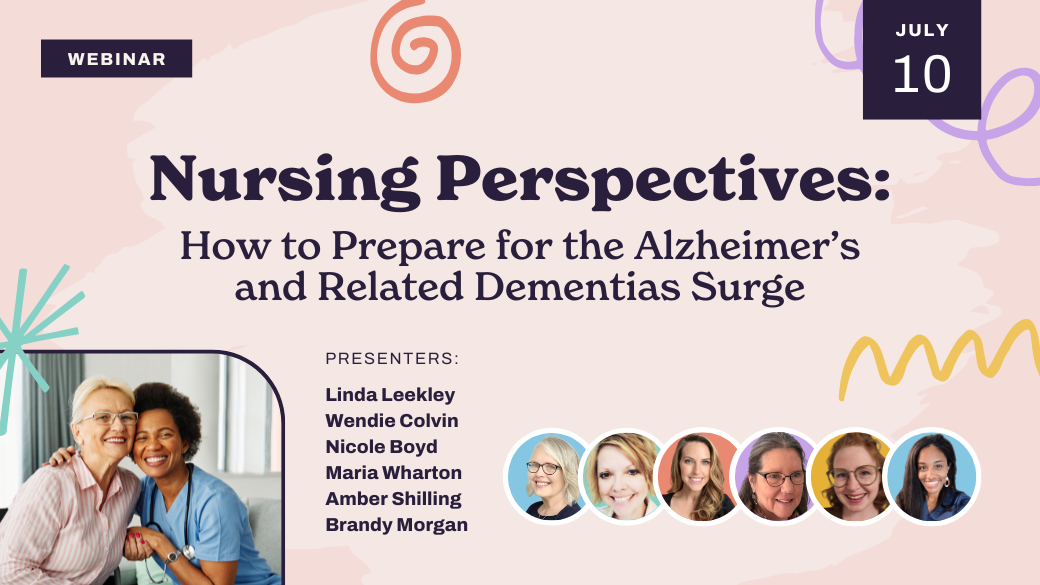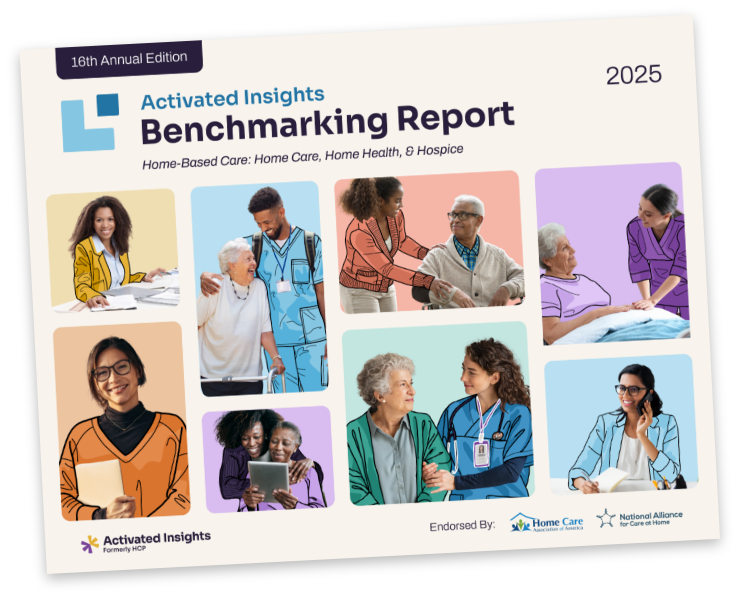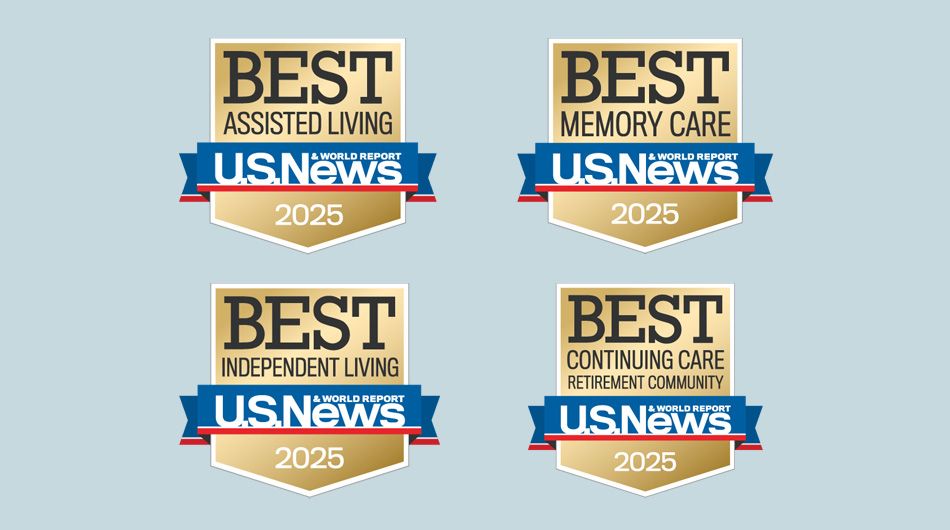The summer heat poses unique safety risks for seniors. Discover how to keep them safe and protected from heat-related illness with these essential care tips.
For many people, summer is a time for beach trips, barbecues, and outdoor adventures. But did you know that 2023 was the hottest year ever recorded?* Across the U.S., heat-related illnesses led to nearly 120,000 emergency room visits and more than 2,000 deaths. And this year’s heat wave is on pace to top those 2023 temperatures.
It’s clear that summer brings unique safety challenges for providers of senior care, whether that care occurs at the client’s home or in a senior living community. Consider the personal care aide in Florida whose client lives in a home without air conditioning, or the assisted living facility in Texas dealing with a heat-related power outage. Ensuring the safety and well-being of both staff and clients during hot months is paramount. This article offers essential tips and best practices to help you, your staff, and your clients navigate the summer season smoothly and safely.
How to Determine Dangerous Heat Levels for Seniors
In addition to looking at a weather forecast or simply stepping foot outside, there are resources that you and your staff can utilize to help determine when the heat in your area is dangerous.
Heat Index
The heat index measures how hot it feels when you add the humidity level to the outside temperature. For example, your high temperature for the day is expected to be 95 degrees, however the local humidity level is 60%. According to the heat index, it will feel like it’s 114 degrees outside!
Action Step: Make sure your staff knows how to check the heat index. One good source is Weather.com. Enter your zip code in the search bar and then scroll down for the day’s “feels like” temperature.
UV Index
The UV index measures the amount of ultraviolet radiation coming from the sun. The higher the number, the higher the risk of sunburn and, over time, skin cancer. For example, a UV index of 0 means it is nighttime while an index of 16 means you are in a tropical area at noon with a clear sky and little ozone protection.
Action Step: Share this link with your staff so they can track the UV index for any zip code. https://enviro.epa.gov/envirofacts/uv/search

Why is Heat a Risky Business?
What makes heat so dangerous? When both heat and humidity rise, the body must work harder to maintain a normal temperature. Usually, the body accomplishes this by sweating. When the body becomes dehydrated from sweating and fluid loss, its core temperature rises, leading to heat illness or even death. For older adults, the risk is even higher.
Why Seniors Are at Increased Risk of Heat-Related Illness
Fact: Senior clients, patients, and residents are particularly vulnerable to heat-related illnesses due to several factors.
- Decreased Ability to Regulate Temperature: Aging affects the body’s ability to regulate temperature efficiently.
- Chronic Medical Conditions: Many older adults have chronic conditions like heart disease, diabetes, or respiratory illnesses that can be exacerbated by extreme heat.
- Medications: Some medications can impair the body’s ability to respond to heat and stay hydrated.
- Reduced Mobility: Limited mobility can prevent older adults from accessing cooler environments or fluids as needed.
3 Heat-Related Illnesses and How to Treat Them
Every healthcare worker, regardless of their role, should be taught how to recognize heat-related illnesses. During periods of extreme heat, every employee needs to maintain a watchful eye over fellow employees and clients/residents to help prevent serious heat-related complications from occurring.
1. Heat Edema
Heat edema is common in people who are not used to hot weather. You may notice the person begin to sweat profusely, get red in the face, and have swelling in the lower legs, feet, and hands. While heat edema is not dangerous by itself, it can signal that the person is at risk for a more serious heat-related illness.
Action Steps: Notify management, get the person out of the heat, raise their legs, and offer a cool drink.
2. Heat Exhaustion
Heat exhaustion is a heat-related illness that can develop after prolonged exposure to extreme temperatures or severe dehydration. It is a warning that the body is overheating. Commonly affected groups include older adults, individuals with high blood pressure, and those exercising or working in hot environments. Warning signs include heavy sweating, pale and moist skin, muscle cramps, fatigue, weakness, dizziness, headache, nausea, vomiting, fainting, a rapid pulse, and rapid, shallow breathing.
Action Steps: Report the problem immediately! If untreated, heat exhaustion can lead to heat stroke. Medical attention is necessary if the individual has heart problems, hypertension, or if symptoms persist for more than an hour.
3. Heat Stroke
Heat stroke is the most severe heat-related illness, occurring when the body loses its ability to regulate temperature. The person stops sweating, and their body temperature rises rapidly to 106°F or higher. This life-threatening condition can cause permanent damage to the kidneys, heart, lungs, liver, brain, intestines, and muscles. Symptoms include high fever, confusion, bizarre behavior, fainting, staggering, a strong rapid pulse, dry and flushed skin, throbbing headache, nausea, lack of sweating, and coma.
Action Steps: Heat stroke requires immediate emergency medical treatment. While waiting for help, remove clothing and cool the person rapidly with cool water, wet sheets, or ice packs in the armpits and groin. Stay with the person until help arrives.
Prevention Is Key! How to Protect Seniors in the Heat
Since we can’t control the weather, it is vital that every healthcare worker understands how to keep their clients or residents safe during extreme heat.
Emergency Preparedness: Be Ready for Heat Waves
Fact: So far, this summer’s heat wave has caused over 1,000 heat-related deaths and numerous heat-related emergencies.
Action Steps:
- Review your heatwave response plan to ensure it includes identifying high-risk individuals, monitoring weather forecasts, and providing cooling resources. Educate staff on the signs of heat-related illnesses and ensure they know the procedures for responding to such emergencies.
- In addition, home care providers should have an emergency plan in place for their clients. This plan should include ways to keep patients cool, how to identify signs of heat-related illnesses, and knowing when to seek medical help.
- Conduct regular training sessions on summer safety protocols for all staff members. Follow up with simple, easy-to-understand materials to reinforce key messages about hydration, sun protection, and recognizing heat-related illnesses.
Preventing Dehydration in Seniors: A Key Priority
Fact: This summer, dehydration cases are rising sharply, especially among older adults and those with chronic conditions.
Action Steps:
- Remember that many elderly people have a reduced sense of thirst. When the weather is hot, fluids should be offered frequently rather than waiting for them to ask for a drink.
- Some older adults find that drinking extremely cold liquids causes cramps. If clients want ice in their drinks, stick with just a couple of cubes.
- When it’s hot outside, encourage clients to avoid beverages that contain alcohol, caffeine and/or lots of sugar. These substances can cause the body to lose more fluid.
- Offer meals rich in water content, such as salads, fruits, and vegetables. Encourage the intake of smaller, more frequent meals rather than heavy, large ones, which can increase body heat.
- Make sure your staff knows the signs of dehydration, including dizziness, headache, dark urine, inability to urinate, dry nose and mouth, weakness and nausea. For older adults, confusion may be the first sign of dehydration.
Sun Protection: Shielding Seniors Against Harmful UV Rays
Fact: This summer’s heat wave has involved unprecedented UV index levels, increasing the risk of skin damage and heat-related conditions.
Action Steps:
- In a senior community, ensure that outdoor areas used by staff and residents have ample shade. Distribute sunscreen with a high SPF and encourage its regular use. For staff who work outdoors, provide wide-brimmed hats and UV-protective clothing.
- Visiting home care staff members should encourage clients to apply sunscreen regularly and wear protective clothing when going outside.
- Encourage clients, residents, and staff members to stay indoors during periods of high heat index.
Temperature Control: Keeping Seniors Cool Indoors
Fact: When the weather hits the high 90s, electric fans are not enough to prevent heat-related illnesses. Air conditioning is the number one protection against heat-related illnesses.
Action Steps:
- If a client has no air conditioning or a facility experiences an air conditioning failure, consider transporting people to a shopping mall or community center during the worst heat of the day. (Be sure to follow your organization’s policies regarding the transportation of clients.)
- If you manage a senior community, check and service your facility’s air conditioning systems to ensure they are functioning correctly. Use fans and dehumidifiers to maintain a cool environment and consider setting up cool zones where staff and residents can take breaks from the heat.
- For home-based care, encourage staff to report the malfunctioning or absence of air conditioning units and fans in clients’ homes. Encourage the use of cool baths or showers to help regulate body temperature.
- During hot days, clients and staff alike should wear light-colored, loose-fitting clothing, preferably made from natural fibers like cotton or linen. Light colors reflect heat and sunlight, loose cotton clothing allows sweat to evaporate.
- When a cool bath or shower isn’t practical, encourage staff to soak each client’s feet in a bucket of cold water.
- In home-based care, consider keeping the client’s home cooler by serving foods that don’t require turning on the stove or oven.
Prioritize Senior Safety This Summer to Beat the Heat
Summer can be a delightful time, but it requires careful planning and proactive measures to ensure senior safety. By prioritizing hydration, sun protection, temperature control, and emergency preparedness, healthcare administrators can create a safe and enjoyable environment for staff, residents, and clients. Embrace these tips to beat the heat and make the most of the sunny season while keeping everyone healthy and happy.
Related:
5 Ideas to Keep Your Caregiver Training Fresh and Fun Over the Summer
Summer Safety Tips Training Course
* N. N. C. F. E. I. (2024, January 17). 2023 was the warmest year in the modern temperature record. Climate.gov. Retrieved July 16, 2024, from https://www.climate.gov/news-features/featured-images/2023-was-warmest-year-modern-temperature-record#:~:text=Details,decade%20(2014%E2%80%932023).
Related Posts










